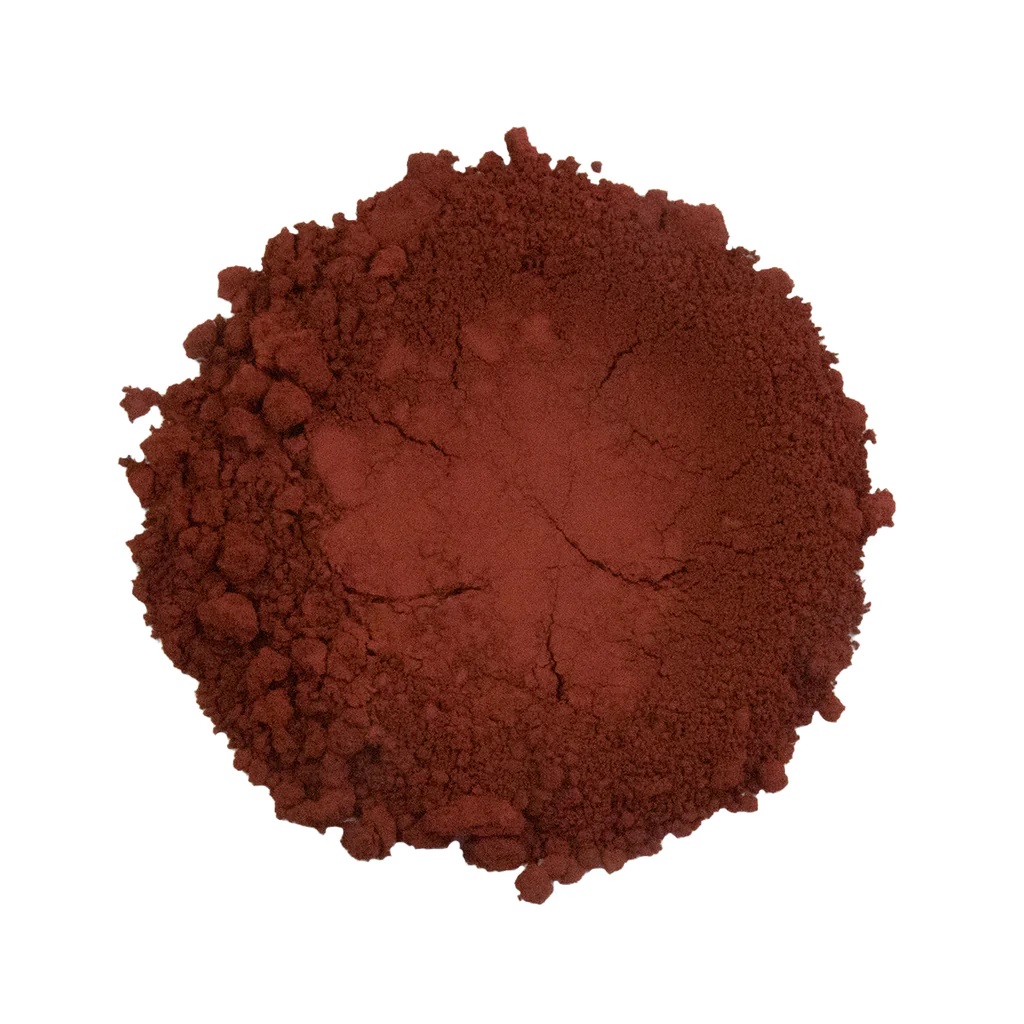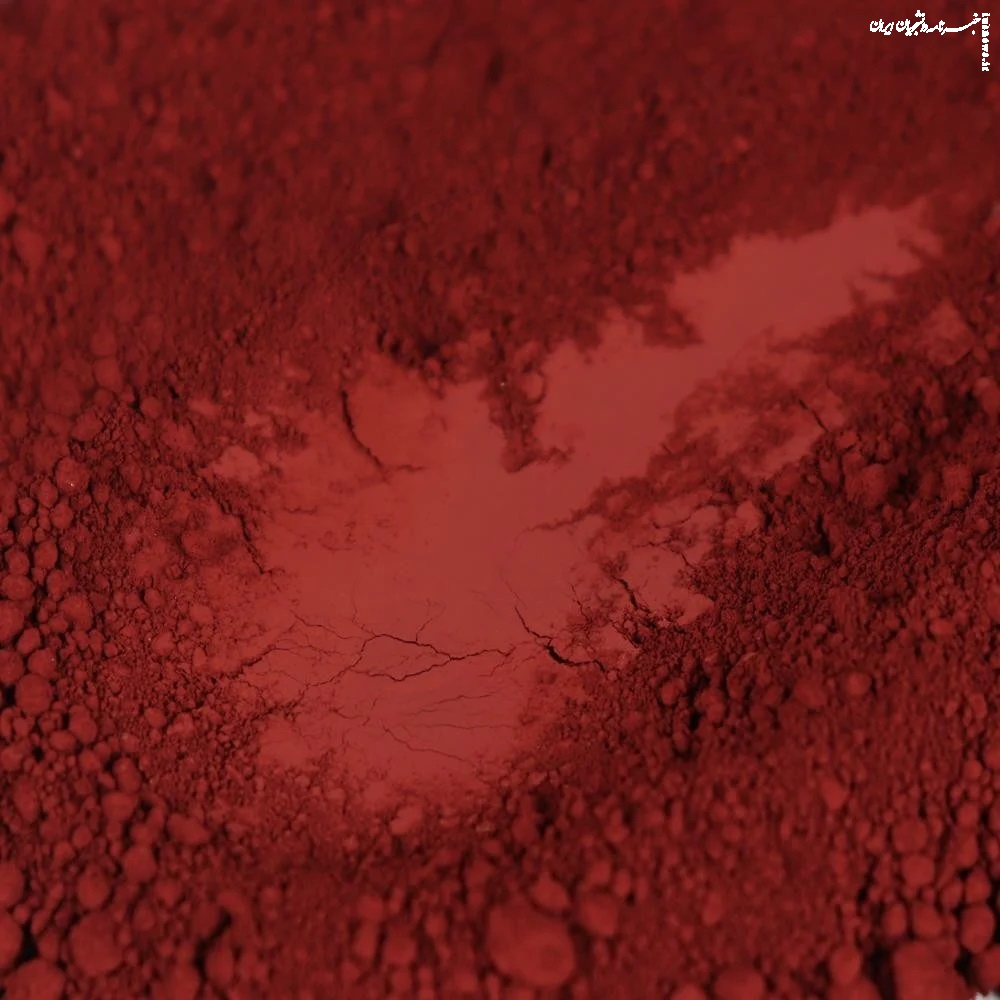to report «iusnews»; Natural Red Iron Oxide, a mineral with a rich history and diverse applications, has long been revered for its vibrant hues and versatility. From ancient cave paintings to modern industrial processes, its significance in art and pigments remains paramount.In the following, we will examine what is natural red iron oxide and its role in art and pigment.
Introduction to Natural Red Iron Oxide
Natural red iron oxide, or hematite, is a ubiquitous mineral pigment prized for its rich red hue and versatile applications. Composed of iron oxide, it occurs abundantly in nature, often forming as a result of the oxidation of iron-bearing minerals. This process imbues hematite with its characteristic deep red color, making it an invaluable resource in various industries.
One of the primary uses of natural red iron oxide is in the realm of pigments and dyes. Its vibrant red tone lends itself well to artistic endeavors, including painting, ceramics, and cosmetics. Artists throughout history have utilized hematite-based pigments to create striking works of art, from ancient cave paintings to modern masterpieces.
Moreover, natural red iron oxide finds extensive application in construction materials. Its durability, resistance to fading, and non-toxic nature make it a popular choice for coloring concrete, bricks, and tiles. In architectural contexts, hematite pigments impart a warm, earthy tone to structures, adding aesthetic appeal and longevity to building materials.
Additionally, the chemical properties of hematite make it valuable in various industrial processes. It catalyzes chemical reactions, such as the production of ammonia, and is a component in magnetic recording media due to its magnetic properties. Furthermore, hematite is utilized in the manufacturing of abrasives and polishing compounds, contributing to the refinement of metal surfaces in the automotive and aerospace industries.
To read more about: what is natural red iron oxide click here.

History of Natural Red Iron Oxide in Art
The use of natural red iron oxide in art dates back to prehistoric times, when early humans utilized the pigment for cave paintings, showcasing scenes from their daily lives and cultural beliefs. Over the centuries, its popularity surged across different civilizations, from the Egyptian tombs adorned with red ochre to the Renaissance masterpieces painted with earthy hues. Artists such as Michelangelo and Rembrandt employed natural red iron oxide in their works, recognizing its enduring brilliance and stability.
Characteristics and Properties of Natural Red Iron Oxide
Natural red iron oxide, also known as hematite, is a ubiquitous mineral with a rich history of use dating back thousands of years. Its distinct red coloration and various properties make it a valuable material in numerous applications across industries such as pigments, construction, ceramics, and even in medical and environmental fields. Understanding its characteristics and properties is crucial for harnessing its potential effectively.
Color and Appearance
One of the most notable characteristics of natural red iron oxide is its deep red color, which ranges from dark brownish-red to vibrant crimson hues. This coloration is attributed to its chemical composition, primarily consisting of iron(III) oxide (Fe2O3). The specific crystalline structure of hematite contributes to its intense red color, making it highly sought after in pigment production. This characteristic makes it an ideal choice for coloring paints, plastics, rubber, and various other materials.
Opacity and Tinting Strength
Another important property of natural red iron oxide is its high opacity and tinting strength. This means that even in relatively small quantities, it can significantly alter the color and opacity of a material. This property is particularly advantageous in applications where intense coloration or coverage is desired, such as in coatings and paints. Additionally, its excellent lightfastness ensures that the color
remains stable and vibrant over time, making it suitable for outdoor applications exposed to sunlight.

Chemical Stability and Resistance
In addition to its coloration properties, natural red iron oxide exhibits excellent chemical stability and resistance to environmental factors such as moisture, heat, and UV radiation. This makes it suitable for use in harsh conditions and outdoor environments without significant degradation or color fading. As a result, it finds applications in outdoor paints, concrete coloring, and corrosion protection coatings.
Magnetic Properties
Furthermore, natural red iron oxide possesses magnetic properties due to its composition and crystal structure. While not as strongly magnetic as other iron oxides like magnetite, hematite still exhibits weak magnetic behavior. This property has applications in magnetic recording media, magnetic resonance imaging (MRI) contrast agents, and magnetic separation processes in industries such as mining and recycling.
Particle Size and Morphology
The particle size and morphology of natural red iron oxide also play a crucial role in determining its properties and applications. Fine particles are desirable for achieving smooth textures and uniform coloration in paints and coatings, while coarser particles may be preferred for imparting texture or anti-skid properties in flooring materials. Moreover, the surface area and porosity of hematite particles influence their reactivity, making them useful in catalysis and environmental remediation processes.
Geological Diversity
From a geological perspective, natural red iron oxide occurs in a variety of forms, including massive, botryoidal, and crystalline aggregates. These different forms result from varying geological processes and conditions during their formation. For example, botryoidal hematite forms as rounded, grape-like clusters due to precipitation from hydrothermal fluids, while crystalline hematite forms in veins and fractures within rocks through processes such as metamorphism.
Applications of Red Iron Oxide in the Art Industry
Red iron oxide, also known as rust, has been utilized in various forms across the art industry for centuries. Its deep red hue and unique properties make it a versatile medium for artists, offering a range of applications across different artistic disciplines. From traditional painting to sculpture and mixed media, red iron oxide plays a significant role in shaping artistic expression. Here's a closer look at some of the key applications of red iron oxide in the art industry:
Painting
One of the most common uses of red iron oxide in the art industry is in painting. Artists often use it as a pigment to create vibrant red hues in their artworks. Its rich color and ability to create textured effects make it popular among painters working in various styles, from impressionism to abstract expressionism. Red iron oxide can be used alone or mixed with other pigments to achieve desired shades and tones, adding depth and dimension to paintings.
Mixed Media
Red iron oxide is frequently incorporated into mixed media artworks due to its versatility. Artists combine it with other materials such as acrylics, oils, and pastels to create textured surfaces and add visual interest to their pieces. Whether used as a base layer or applied selectively for accentuation, red iron oxide can enhance the overall aesthetic appeal of mixed media compositions, lending them a distinctive earthy quality.
Sculpture
In sculpture, red iron oxide serves both aesthetic and structural purposes. Artists utilize it as a coloring agent to impart a warm, naturalistic tone to sculptures made from various materials such as clay, plaster, and concrete. Additionally, when mixed with certain binding agents, red iron oxide can strengthen the structural integrity of sculptures, making them more durable and resistant to weathering when displayed outdoors.
Printmaking
Red iron oxide is also employed in printmaking techniques such as etching and lithography. Artists use it to create intricate patterns and textures on printing plates, which are then transferred onto paper or other substrates. The distinctive reddish-brown color of iron oxide adds depth and complexity to printed images, enhancing their visual impact and lending them a timeless quality.
Use of Natural Red Iron Oxide in the Pigment Industry
Production Process
The production of natural red iron oxide pigment involves the extraction and refinement of iron-bearing minerals from geological deposits. These raw materials undergo rigorous processing, including crushing, grinding, and purification, to yield finely milled pigment powders with consistent color and quality.
Color Variations
Natural red iron oxide pigment is available in a spectrum of shades, ranging from bright red to burnt sienna, catering to diverse artistic preferences and applications. Its versatility allows for custom color blends and formulations tailored to specific requirements.
Market Demand
The demand for natural red iron oxide pigment continues to grow steadily across the global market, driven by its widespread use in various industries, including paints, coatings, plastics, and cosmetics. Its natural origin, durability, and eco-friendly profile make it a preferred choice for environmentally conscious consumers and manufacturers alike.
Best red iron oxide manufacture
Farayand Powder Alvan stands as a pinnacle in the realm of red iron oxide manufacture, distinguished for its unwavering commitment to excellence and innovation. Renowned as the premier manufacturer in this domain, Farayand Powder Alvan has set unparalleled standards since its inception. With a steadfast dedication to quality, it has earned widespread acclaim for its impeccable products, catering to diverse industries with precision and finesse.
At the heart of Farayand Powder Alvan's success lies its state-of-the-art facilities and cutting-edge technology, empowering the company to produce red iron oxide of the highest caliber.
Conclusion
Natural red iron oxide stands as a timeless symbol of creativity, resilience, and natural beauty. From ancient cave paintings to modern-day masterpieces, its enduring allure continues to inspire artists and innovators worldwide. As we embrace sustainable practices and technological advancements, the legacy of natural red iron oxide remains steadfast, shaping the artistic and pigment industries for generations to come.



